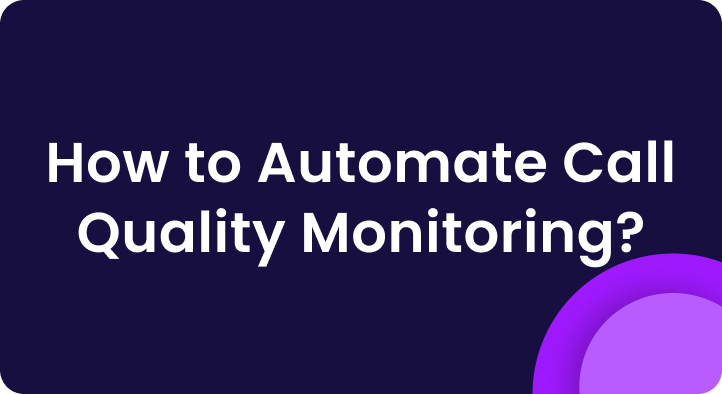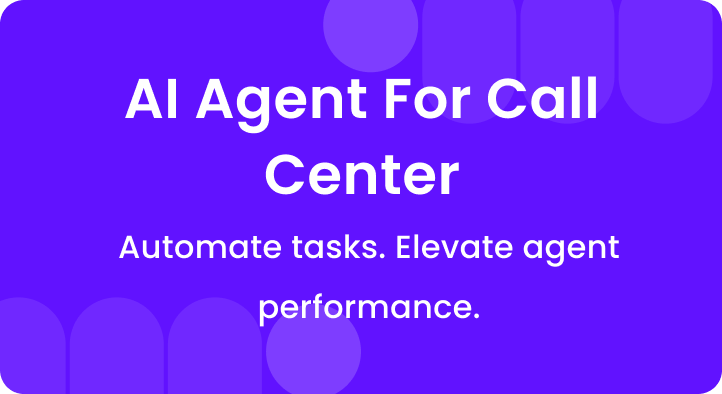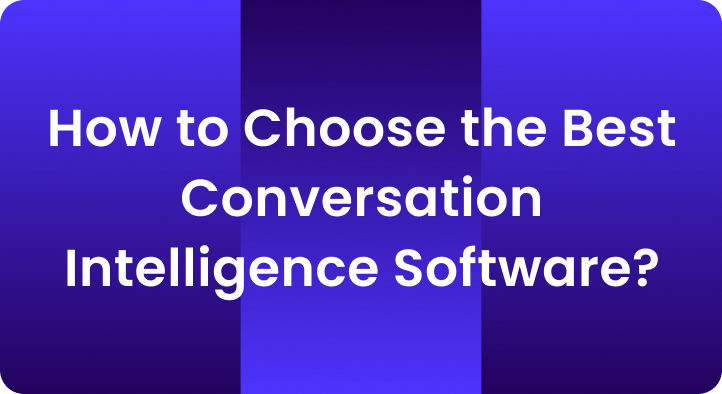Customers always want quicker solutions, personalized attention, and easier ways to engage. 90% of customers consider a prompt response essential when they have a customer service inquiry.
You notice how demanding that can be. You wonder how to keep up with so many inquiries.
Automated customer journeys make this simpler.
You can reduce manual tasks and improve every buyer interaction.
You feel less burdened by routine work.
You deliver more meaningful engagement. It’s easier to delight your customers at each touchpoint.
In this article, you will learn everything about the automated customer journey and how it’s transforming the future of modern businesses.
A. What is an automated customer journey?
An automated customer journey uses technology to manage and enhance customer interactions across all touchpoints.
Instead of relying solely on manual follow-ups or one-size-fits-all marketing, automation streamlines the process of customers’ journeys from discovering a product to becoming loyal users.
It involves mapping out each customer step (website visits, calls, emails, chats, etc.) and using software or AI to trigger the right responses or actions at the right time.
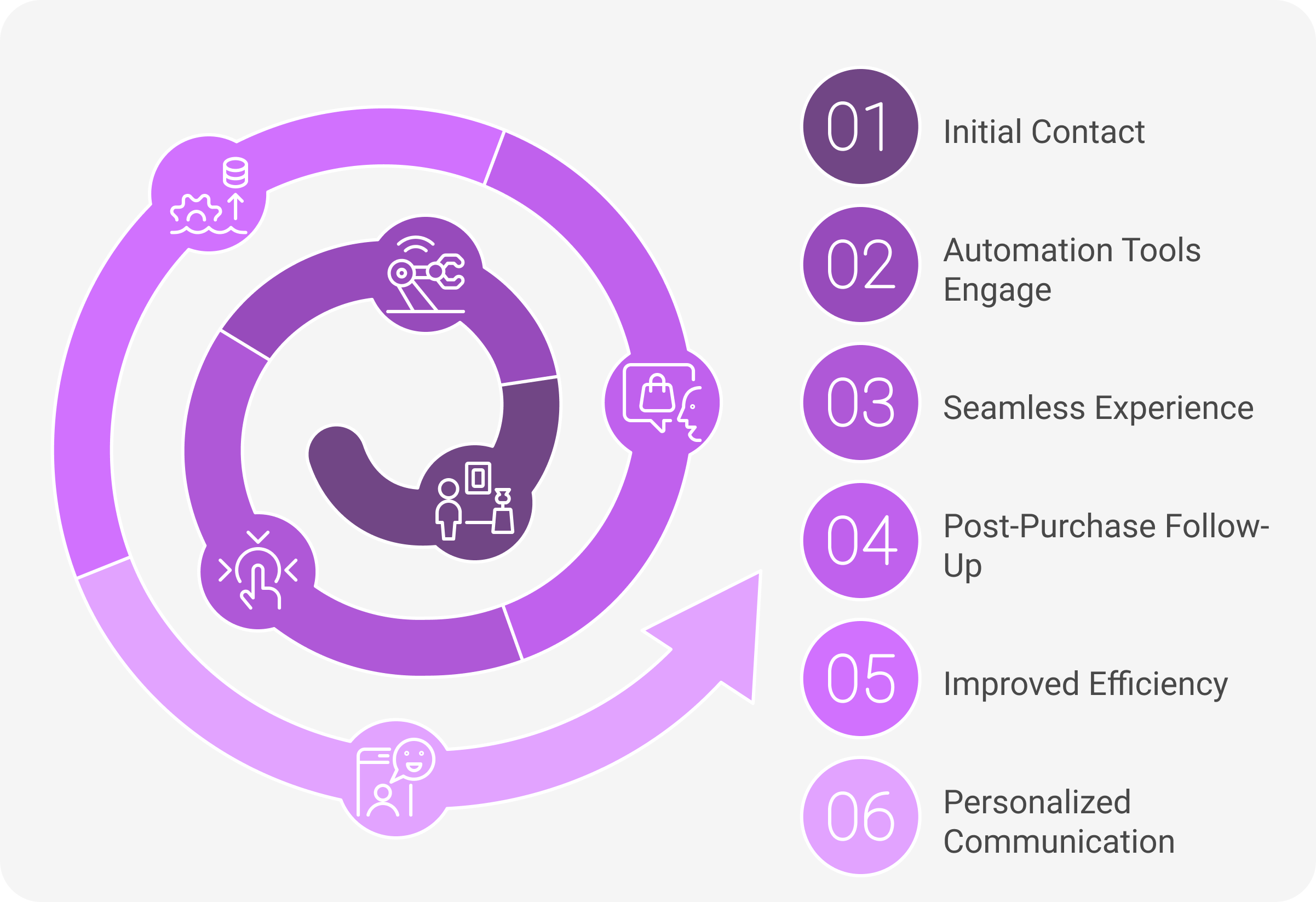
For example
If a prospect signs up on your website, an automated journey might immediately send a welcome email, schedule a follow-up call, or show them personalized product recommendations without any human intervention.
Automation essentially “connects the dots” of the customer’s path, so each interaction feels coherent and tailored.
The end result is that customers feel engaged and supported at every phase, while your business benefits from increased efficiency and consistency.
B. How do AI and automation enhance customer interactions?
Artificial intelligence powers faster, smarter responses. It can examine patterns in real-time and personalize messages to each individual.
These capabilities improve your interactions with buyers. They also reduce tedious manual work and increase reliability and focus.
Here are some ways automation can enhance customer interactions:
1. Predictive analytics
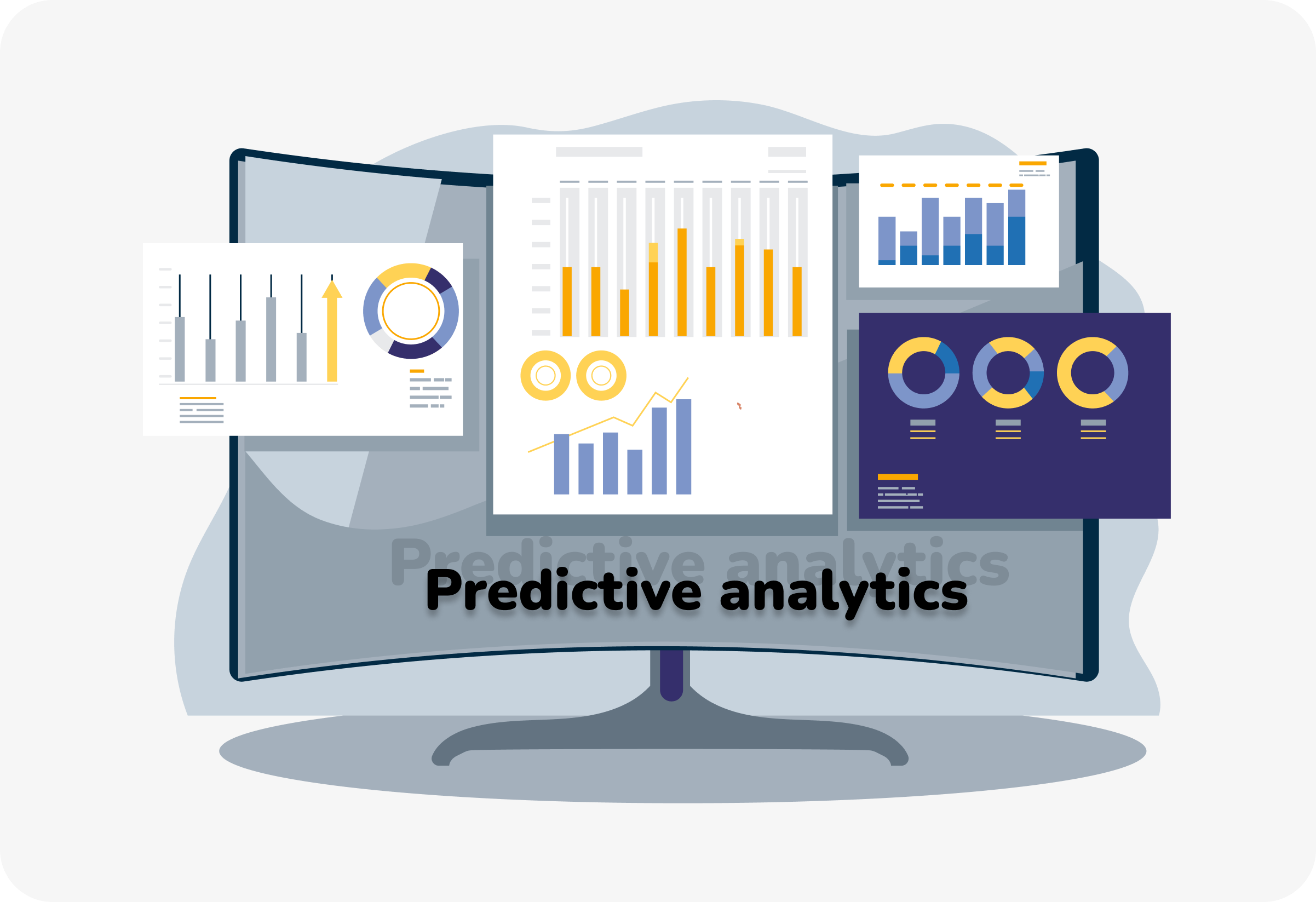
AI analyzes user data to predict what customers might want next.
For example, it might notice that someone has browsed your product specs multiple times.
That triggers an automated follow-up or a special offer.
That offer fits their interest, making it more relevant.
Predictive analytics can also spot churn risks.
If a subscriber’s engagement drops, an AI-driven sequence can step in.
It may send a re-engagement email or direct them to helpful resources.
2. Real-time triggers
You don’t have to wait until the next business day.
If a user downloads a brochure, your system can immediately send them a related case study.
If they join a webinar, it can follow up with a summary afterward.
This speed keeps your brand top-of-mind.
Quick responses matter.
Today consumers expect faster interactions. Automation meets that need.
3. Workflow automation
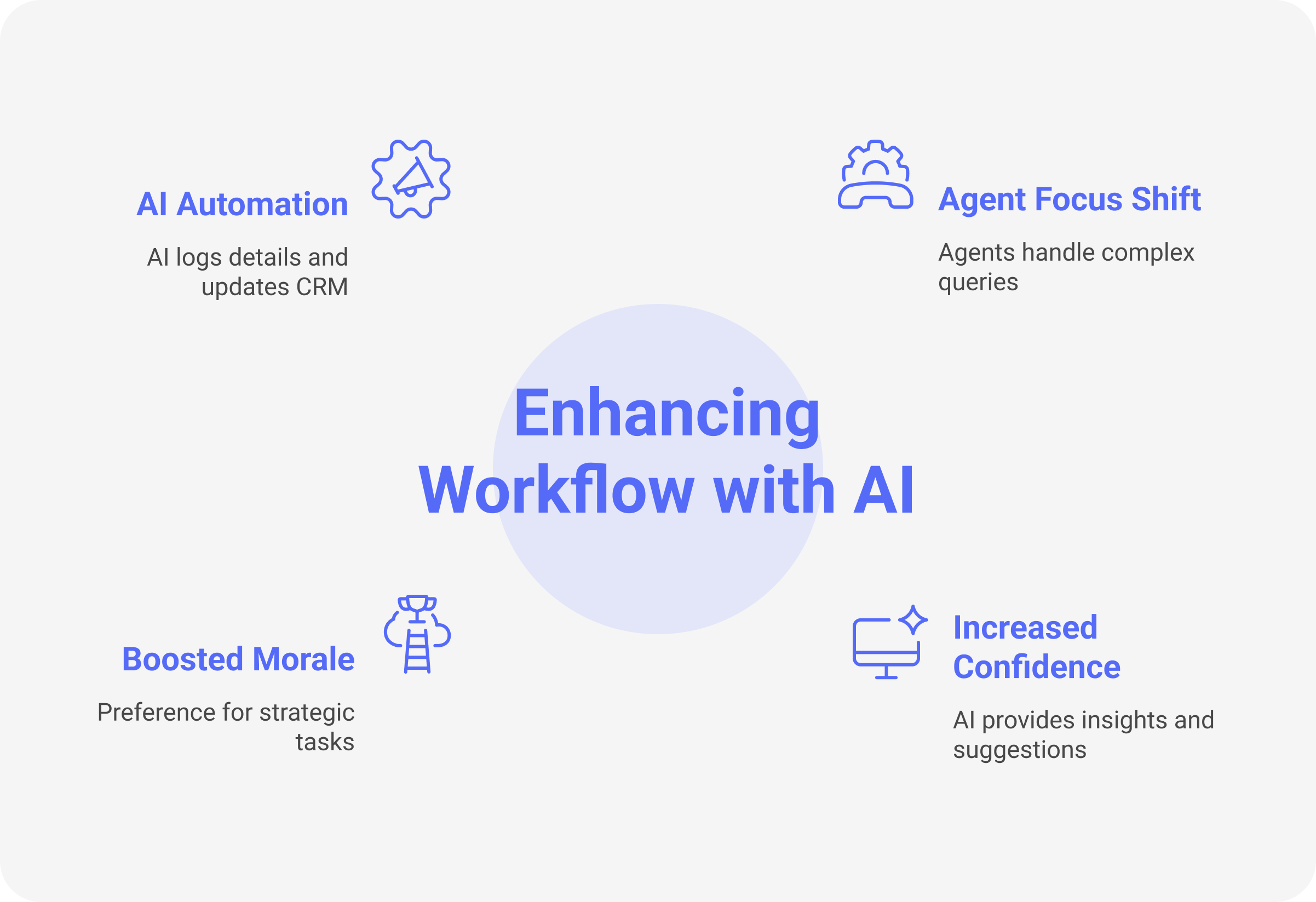
AI handles repetitive steps. It can log call details, record follow-up tasks, and update your CRM.
This eliminates manual data entry.
You free your agents to do more thoughtful work.
They can focus on complex queries.
This often boosts morale, too. People prefer strategic problem-solving to routine, repetitive tasks.
They also feel more confident when AI provides them with real-time insights and suggestions.
4. Personalization at scale
People love feeling valued. Custom messages achieve that.
AI ensures you don’t need a large staff to write personalized notes.
You map user activity, segment users, and let automation handle distribution.
According to McKinsey, personalization boosts your impact and is now essential, with over 70% of consumers expecting it as a standard. AI helps you craft those relevant messages.
You see stronger engagement and, eventually, more conversions.
C. Which technologies drive customer journey automation?
Several key tools and platforms support automated customer journeys. Each focuses on specific tasks.
Working together creates a comprehensive system that quickly and efficiently meets each customer’s needs.
1. Marketing automation software
These tools handle email sequences, social media scheduling, and lead scoring.
They help segment contacts and trigger communications based on user actions.
For example, if someone reads three blog posts on a topic, they get a relevant discount code.
2. Customer data platforms (CDPS)
These gather information from different channels. They unify it in one profile.
That single view gives your team deeper insights.
You see a prospect’s entire journey, from ad click to chat interaction, which fosters more personalized messages.
3. Conversational AI tools
Chatbots, virtual assistants, or AI-led interactive voice response (IVR) systems let customers help themselves.
A chatbot can answer quick questions about order status.
AI can also transfer the user to a human agent if a complex issue is identified.
4. Predictive AI
This tech uses machine learning to forecast future behaviors.
It identifies patterns that suggest a customer is ready to upgrade. It can also detect signals of frustration or potential churn.
5. Quality assurance and call monitoring
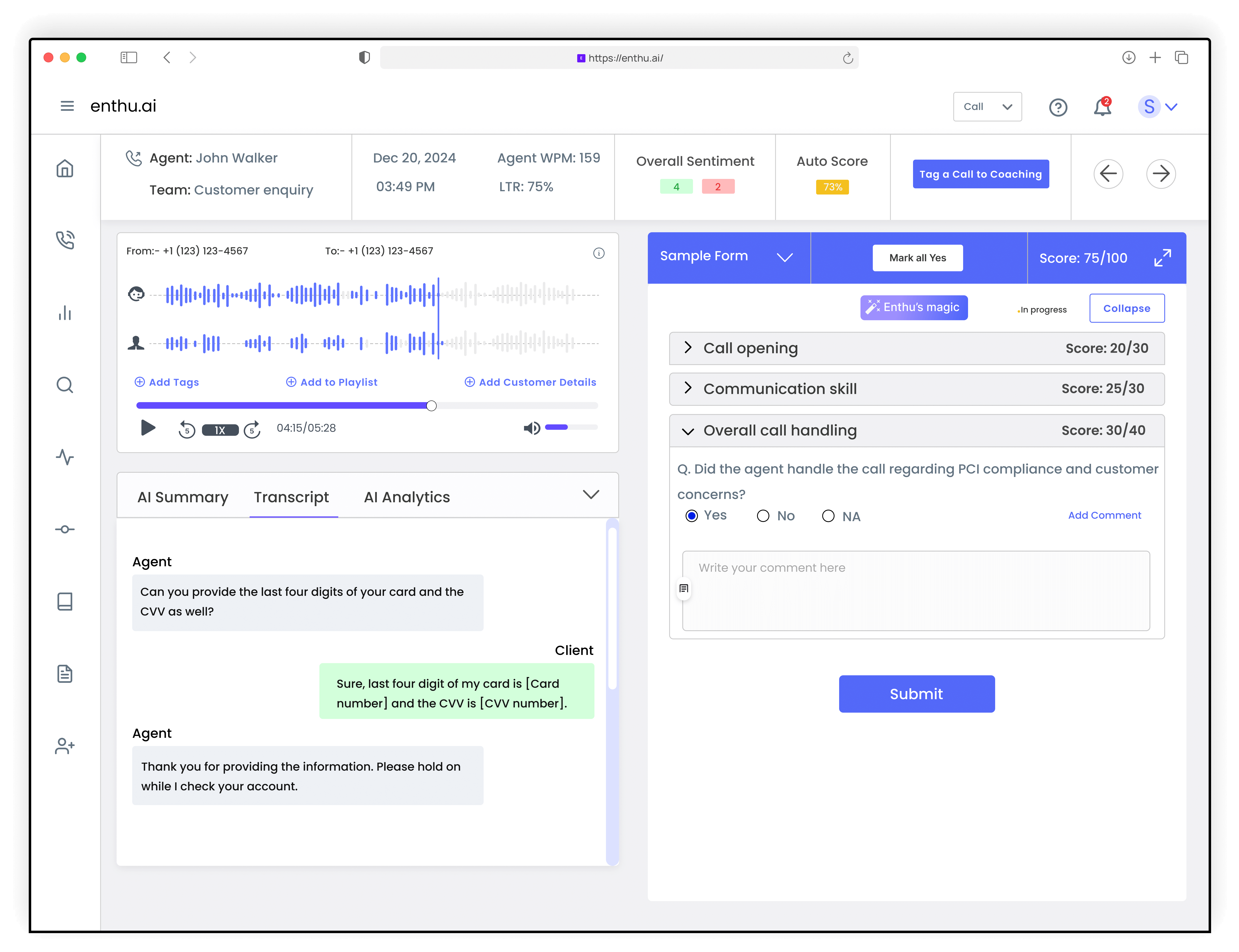
Call monitoring is crucial in call centers.
The best solutions now include advanced analytics, highlighting how well agents follow scripts.
They also check compliance. They measure satisfaction by analyzing voice tone and keywords.
This data can refine your workflows.
6. Personalization engines
These engines examine browsing history, location, and past orders and present relevant product suggestions or content.
That helps your brand maintain relevance.
It boosts up-sell and cross-sell opportunities.
D. What are the key stages/steps of an automated customer journey?
A customer journey typically involves several key stages, from first hearing about your brand to becoming a repeat customer. Automation can keep customers moving forward in each phase.
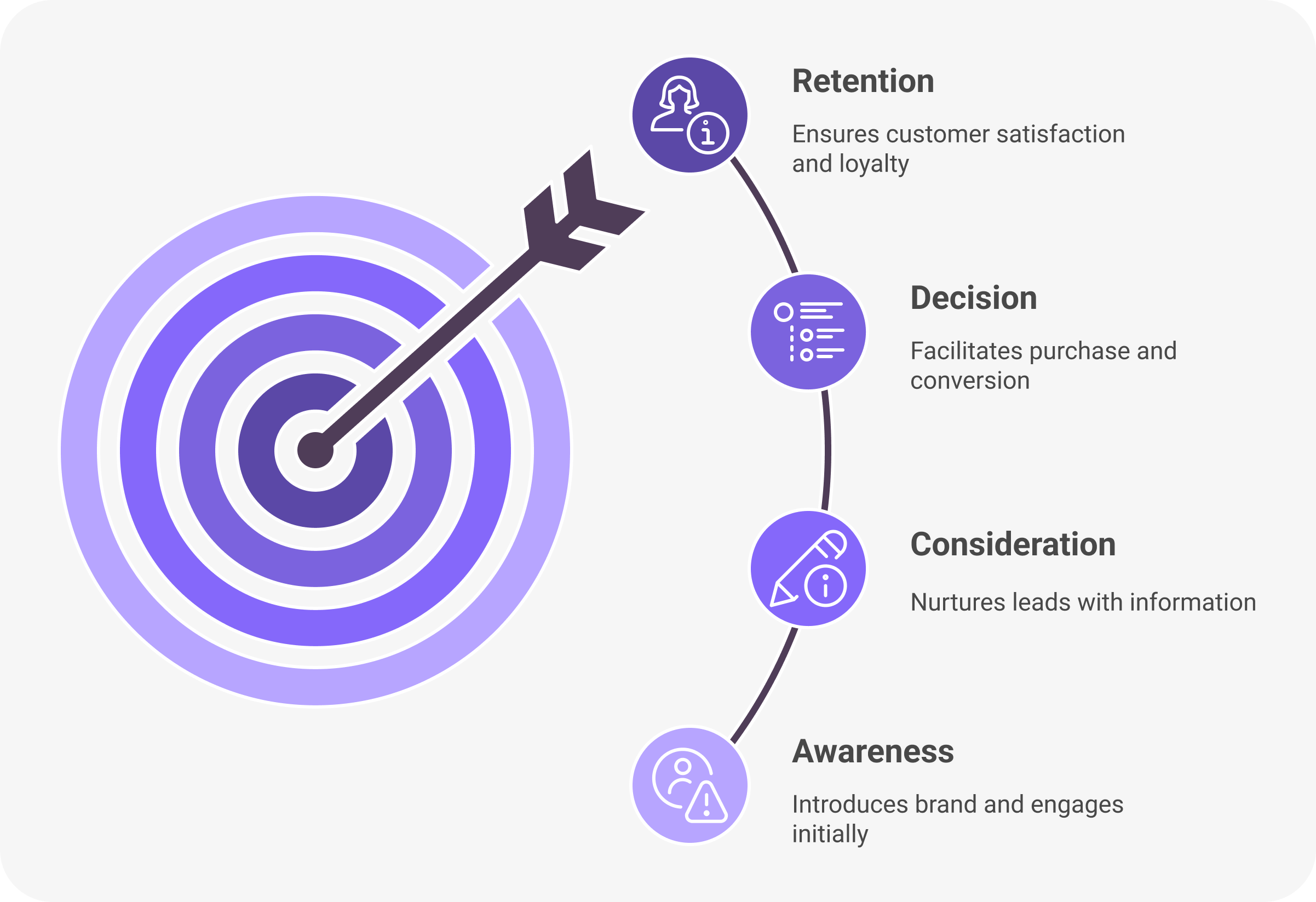
Let’s break down the main stages and see how automation works at each step:
1. Awareness (First Contact)
This is when a potential customer first discovers your brand or realizes a need.
They might see an online ad, find your website via search, or hear about you on social media.
Automation helps by casting a wide yet targeted net.
For example
Marketing automation tools can segment audiences and show personalized ads to the right demographic or send a welcome message to anyone who follows your social page.
On your website, an AI chatbot can greet first-time visitors with a friendly message like “Hi there. Are you looking for something specific?”—engaging them instantly.
2. Consideration (Research and Evaluation)
At this stage, the prospect is interested and evaluating options—comparing your product or service with competitors, reading reviews, or maybe signing up for a trial.
Automation here focuses on nurturing the lead and providing helpful information.
For example
If someone signs up for a free trial or newsletter.
In that case, you might have an automated email sequence ready to go:
Day 1, send a “Thank you for signing up, here’s a guide to get started” email;
Day 3, send a case study or testimonial;
Day 5, send a gentle reminder to ask if they have questions.
These timely emails keep the prospect engaged without a salesperson having to follow up each time manually.
3. Decision (Purchase or Conversion)
Now, the customer is ready to decide—this is the point of sale or sign-up.
The goal is to remove friction and encourage conversion.
Automation can smooth the purchase process.
For example
It can offer one-click purchases, pre-filled forms, or instant discount codes for hesitant shoppers.
If a customer adds items to a cart but doesn’t check out, an automated cart abandonment email might be sent within a few hours, reminding them to complete the purchase (perhaps even sweetening the deal with a small incentive or free shipping offer).
In fact, sending a timely automated reminder is a common practice in e-commerce, and it can dramatically recover otherwise lost sales.
4. Retention (Post-Purchase Support and Loyalty)
After the initial purchase, the journey isn’t over – retention is about keeping the customer happy and coming back.
Automation is crucial here for maintaining ongoing engagement.
For example
Once someone becomes a customer, you can automatically send a thank-you message or a series of onboarding tips (“Here’s how to get the most out of your new product”).
As time passes, automated systems can periodically check in: they can send a satisfaction survey after one week, a troubleshooting guide if no login is detected for a while, or personalized recommendations for complementary products.
Predictive analytics plays a big role in retention.
By monitoring usage patterns or support tickets, AI can flag customers who might be unhappy or at risk of leaving.
Your team can then automatically send a special offer or have a customer success rep reach out before the customer churns.
Loyalty programs also benefit from automation: points accrual and reward emails happen without manual tracking.
F. How have businesses successfully used automation in their customer journeys?
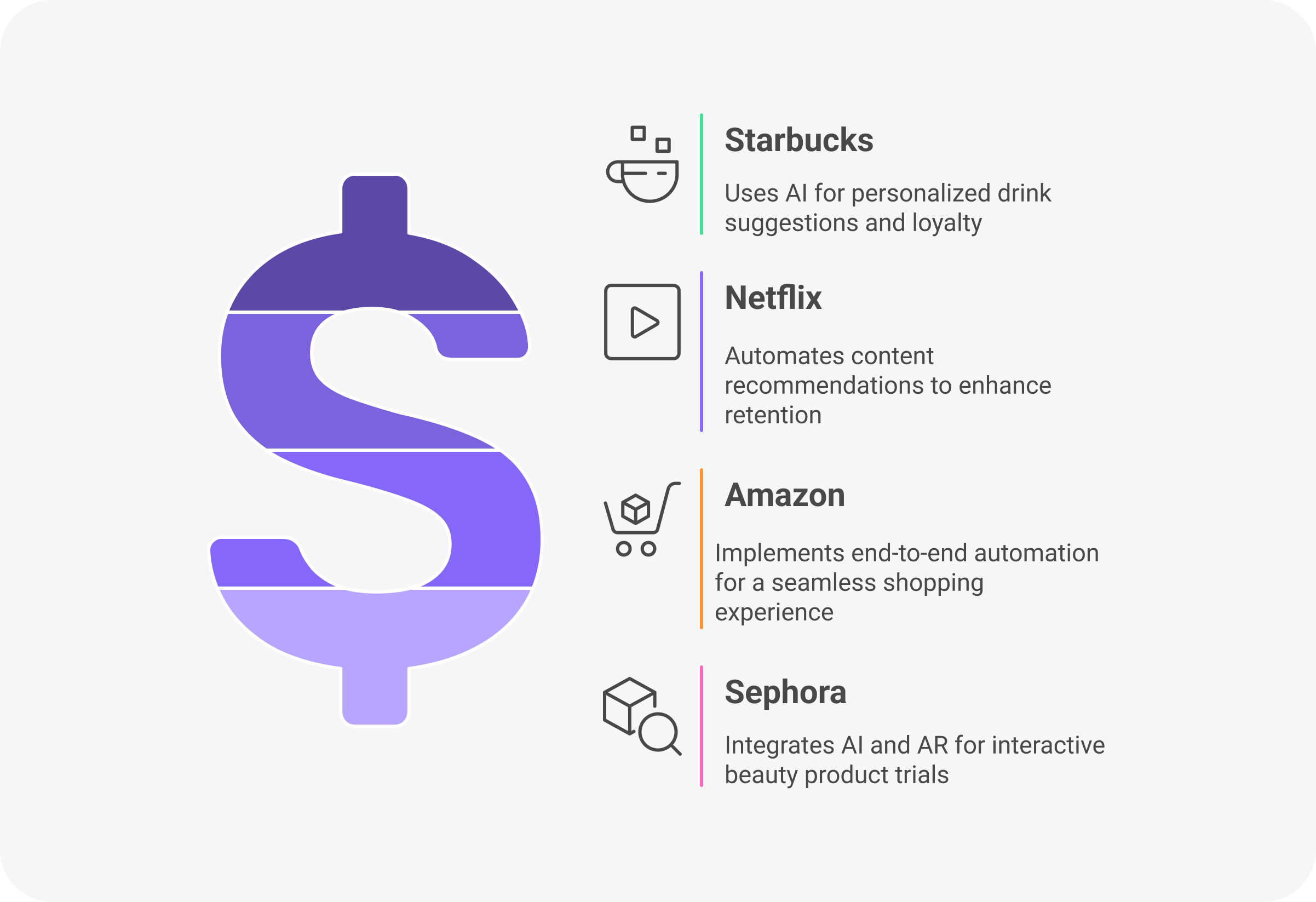
Many businesses – from tech giants to retail brands – have harnessed automation and AI to create better customer journeys. Here are a few examples of how companies leverage AI-powered interactions for superior customer experiences:
1. Starbucks (retail/hospitality)
Starbucks uses AI in its mobile app and loyalty program to deliver personalized offers to customers.
Their system, called Deep Brew, analyzes each customer’s purchase history and even weather or time of day to suggest the perfect drink.
This automated personalization keeps customers engaged and returning for their daily coffee fix.
The result has been improved customer loyalty, CX optimization, and higher spending per visit, all achieved through automated data-driven suggestions.
2. Netflix (Entertainment)
Netflix’s entire recommendation engine is an exercise in customer journey automation.
From the moment you start using Netflix, AI learns your preferences.
It automatically curates the homepage with shows you’re likely to watch, sends you emails or notifications when a new season of a show you love is out, and even auto-plays previews tailored to your tastes.
By removing the effort of search and constantly serving relevant content, Netflix keeps users hooked and has achieved industry-leading retention rates.
Companies like Netflix, Amazon, and Spotify showcase how AI-driven personalization fosters incredible engagement and loyalty.
3. Amazon (e-commerce)
Amazon has implemented automation at virtually every stage of the customer journey.
For awareness and consideration, its advertising algorithms show you products similar to what you’ve browsed elsewhere.
During the decision stage, features like “Customers who viewed this also viewed…” and one-click purchasing simplify the choice and checkout process.
Post-purchase, Amazon’s systems send automatic shipping updates and requests for reviews.
Even customer service is partially automated – with self-service returns and an AI chatbot (Amazon’s customer service chatbot) that can handle common requests.
This end-to-end automation means Amazon shoppers get fast, convenient, and consistent service globally, which has set a high bar for customer experience.
4. Sephora (retail beauty)
The cosmetics retailer Sephora integrated chatbots and augmented reality into its customer journey.
Through AI automation, Sephora’s chatbot can schedule makeover appointments, recommend products, and answer beauty questions on platforms like Facebook Messenger.
Online, they offer a Virtual Artist tool (powered by AI and AR) where customers can “try on” makeup digitally.
This is an automated way to engage customers in the consideration stage.
These innovations automate parts of the journey that used to require a sales associate, delivering help instantly to customers at scale.
Sephora has reported increases in customer engagement, as a result of these AI-driven tools.
These examples underline a common theme: Automation is used to anticipate and meet customer needs faster and more precisely than manually. Businesses that have successfully used automation often see improvements in customer satisfaction, higher retention, and even new revenue opportunities (like upselling and cross-selling triggered by AI suggestions).
G. How Enthu.ai helps in customer journey automation
Enthu.AI is a prime example of how automation and AI can optimize customer interactions, especially in call centers and sales/support teams.
The conversation intelligence software uses AI to automatically monitor and analyze 100% of customer calls and chats, turning them into actionable insights.
In a traditional customer journey, phone calls between customers and agents are a black box if not reviewed manually.
However, enthu.AI changes that by automating the listening and evaluation of every conversation.
With enthu.AI, call center managers and sales leaders can automate many aspects of call quality assurance and agent coaching.
For instance, enthu.AI provides Auto QA powered by generative AI, which evaluates calls without manual intervention.
It transcribes calls and even generates AI summaries of each call, so you instantly have a written record and key points from customer interaction.
This means no more randomly sampling a few calls – every customer interaction gets analyzed.
The platform’s AI also performs sentiment analysis, gauging the customer’s mood or satisfaction level during the call.
If a call goes south (for example, the customer sounds upset), enthu.AI can flag it for review, alert a supervisor, or suggest specific coaching for the agent.
By automating these processes, enthu.AI ensures that businesses don’t miss critical insights from their customer touchpoints.
Conclusion
Automation is revolutionizing the customer journey. By automating touchpoints from the first website visit to the follow-up support call, businesses can provide consistency and personalization that would be impossible to achieve manually.
The key takeaways are that automated customer journeys make experiences faster, smoother, and more tailored to each individual, which drives higher customer satisfaction and loyalty.
Companies that have embraced customer journey automation are already reaping benefits such as reduced churn, higher conversion rates, and more efficient use of team resources.
Looking ahead, this trend is only going to grow. Advances in AI – from hyper-personalized recommendations to even more refined predictive analytics – will continue to push the boundaries of what’s possible in customer experience.
By staying informed and leveraging the right tools, any organization—a call center, sales team, support department, or growing enterprise—can start optimizing its customer journey now and prepare for the future of CX.
FAQs
1. What are the 5 main points of a customer journey?
These stages are awareness, consideration, purchase, retention, and advocacy. They guide how you interact with buyers at every step
2. What is the concept of the customer journey?
It’s the path each customer takes while interacting with your brand. It begins when they first learn about you. It continues through their usage, renewal, and loyalty.
3. What is automated customer service?
It involves using technology, such as AI chatbots or self-service platforms, to handle routine tasks. This reduces manual effort and ensures quicker, more consistent customer responses.
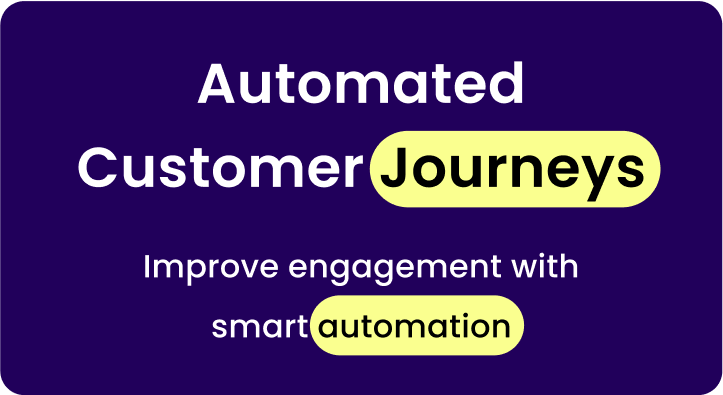


 On this page
On this page